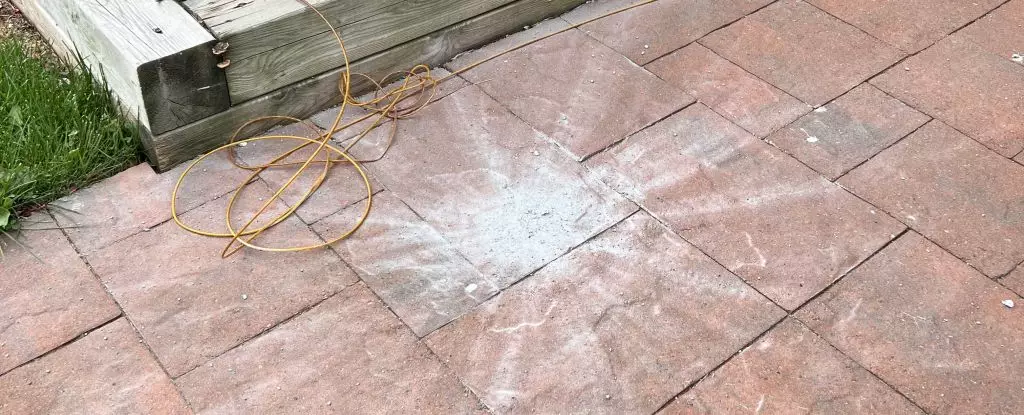In an era where video surveillance systems are as commonplace as smartphones, there are moments that leave us collectively awestruck. One such moment transpired in July 2024 on Prince Edward Island, Canada, when a remarkable event unfolded—a falling meteorite caught on a home security camera. This incident, recorded by Joe Velaidum and Laura Kelly’s Ring doorbell camera, is poised to become an extraordinary milestone in meteorite documentation. Not only did they capture the visual of a meteorite plummeting through the atmosphere, but they also documented the auditory experience as the cosmic fragment impacted the pavement outside their home. This unprecedented event may mark the very first time that the sound of a meteorite’s fall has been recorded, an extraordinary contribution to our understanding of these celestial phenomena.
The significance of this event is magnified by its serendipitous nature. Velaidum and Kelly were out with their dogs when the meteorite entered the Earth’s atmosphere. Upon returning home, they unknowingly stepped into history, but it was only after hearing from Kelly’s parents—who reported a loud bang—that they began to realize something extraordinary had transpired. It was a moment teetering between oblivion and discovery as Velaidum scrolled through the footage on his Ring camera. “It’s shocking! I was right there, just moments before the impact,” he reflected in an interview, emphasizing the precarious nature of the situation. Had he been in the wrong place at the wrong time, the outcome could have been disastrous.
Geologist Chris Herd from the University of Alberta analyzed the remnants of this unique meteorite, which was found to be the first of its kind from Prince Edward Island. Dubbed the Charlottetown Meteorite, it announced its descent with unmatched splendor. Herd noted that no prior meteorite falls have been documented with sound, making this case singular in the annals of space science. The subsequent investigation revealed small fragments that had survived the overwhelming force of entry, as they ricocheted off the ground and came to rest in the surrounding grass. Perhaps most astonishing was the discovery of a tiny crater, measuring merely 2 centimeters wide, where the meteorite had struck, adding a tangible relic to this cosmic event.
Further study classified the meteorite as an ordinary chondrite, a type that holds crucial information regarding the primordial materials that constituted our Solar System. These meteorites, composed primarily of non-metallic minerals, remain relatively unchanged since their formation. They offer valuable insights into the conditions that prevailed in the early Solar System, when everything was coalescing from primordial dust and gas. While ordinary chondrites are the most frequently recovered meteorites—representing about 90% of all finds—they remain scientifically significant. Each piece tells the story of our cosmic neighborhood and the evolution of planets and their building blocks.
Despite the sheer number of meteoric materials entering Earth’s atmosphere daily—an estimated 48.5 tons—very few manage to survive the atmospheric entry and actually strike the ground. In fact, most of these materials disintegrate into harmless particles long before they can reach the Earth’s surface. Moreover, while we may hear about meteorites affecting people, these occurrences are astronomically rare. The vast majority simply fall into oceans or uninhabited areas. Still, residents worldwide need not be alarmed; statistically, the odds of being struck by a meteorite are exceedingly low, making it a fascinating yet harmless aspect of our existence under the night sky.
For those feeling a pang of existential envy—wishing for a similar encounter—there remains a glimmer of hope. The Earth is constantly bombarded by minuscule particles from space, often referred to as space dust. Although tedious, enthusiasts can attempt to locate these tiny remnants by inspecting their roofs or gutters. However, distinguishing genuine space dust from ordinary pollutants can be a challenging endeavor. Nonetheless, there’s a sense of wonder and excitement inherent in searching for these cosmic souvenirs, as they serve as a direct connection to the vast universe beyond our atmosphere.
The recording of the Charlottetown Meteorite marks a significant intersection of technology and nature, highlighting a blend of serendipity and scientific inquiry. This incident not only captures the imagination but also pushes the boundaries of what we know about meteorites and their interactions with our planet. In an age brimming with technological advancements, we find ourselves in an unprecedented position to document and understand celestial events more than ever before. Indeed, our world is filled with mysteries waiting to be uncovered—sometimes, all we need to do is look up.

